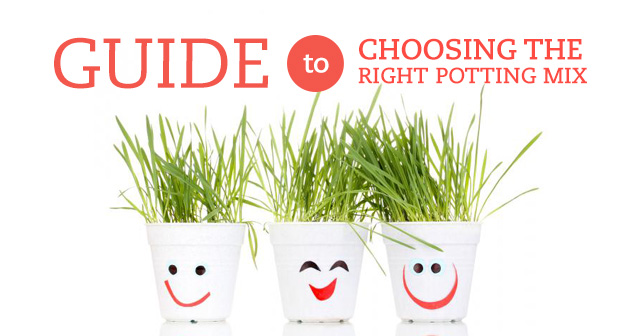
There are so many different types of potting mix it can all get a bit much. We have compiled a list of your basics with pros and cons to help you out. Remember if you are ever in doubt ask the horticulturist at the store.
Loam-Based Potting Mix
This is made from sterilized loam. It’s often available in different recipes or strengths, ranging from formulations for seeds and cuttings to high-fertilizer formulations for long-term, large plants such as shrubs. Loam-based potting mix retains water and nutrients well.
Advantages
– Different blends are formulated for different types of plants.
– Holds water well.
– Contains good supply of nutrients.
Disadvantages
– Bags are heavy.
– Incorporates small quantities of peat.
– Variable quality. Check reviews of brands in the gardening press.
Peat-Based Potting Mix
This potting mix is also commonly known as loamless or soilless potting mix, peat-based potting mix includes multipurpose types for seeds and general potting, and is best for short term use. It is lightweight and well aerated, and the lack of nutrients is easily overcome by the use of slow-release fertilizers. When the peat dries out, it shrinks and can be difficult to rewet.
Advantages
– Easy to handle, being light and clean.
– Consistent, reliable quality.
Disadvantages
– Dries out quickly.
– Prone to waterlogging.
– Low nutrient levels.
– Plants need fertilizing after four weeks (seeds) or six weeks (plants).
Peat-Free Potting Mix
This is one of the best, and least environmentally damaging, options as a green waste compost. Made from recycled household waste, it is dark, black, and heavy, and suitable for most garden and potted plant needs. Otherwise, try coir, or composted bark (except for use with seeds and seedlings).
Advantages
– Good nutrient levels.
– Retains moisture well.
– Inexpensive.
– Heat treatment has eliminated pests, diseases, and weeds.
Disadvantages
– Some peat-free potting mixes give better results than others with certain plants.













53 Responses to “Guide to choosing the right potting mix”